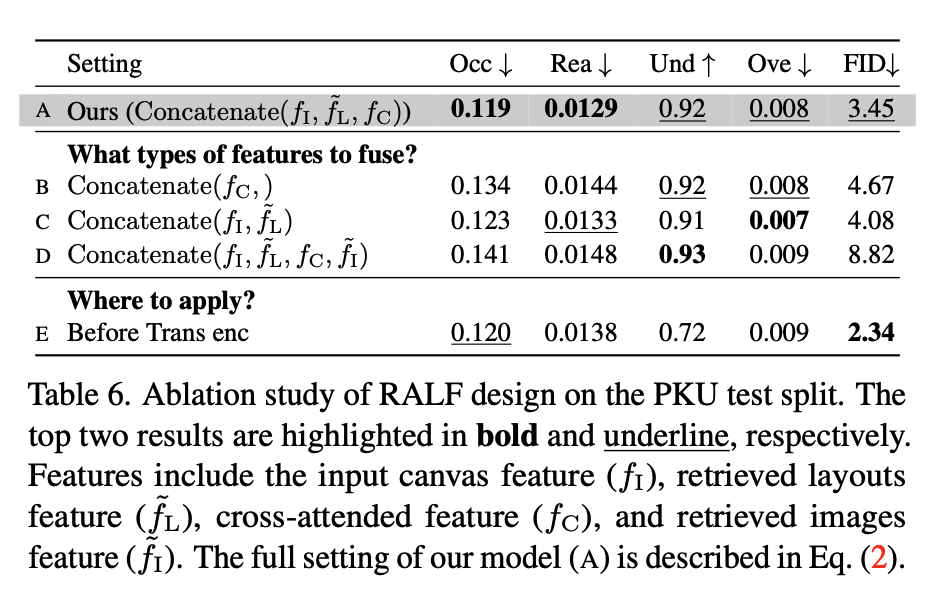[LG][RAG] RALF: Retrieval-Augmented Layout Transformer for Content-Aware Layout Generation
[LG][RAG] RALF: Retrieval-Augmented Layout Transformer for Content-Aware Layout Generation
- paper: https://arxiv.org/pdf/2311.13602
- github: https://github.com/CyberAgentAILab/RALF
- CVPR 2024 accepted (인용수: 0회, ‘24-06-14 기준)
- downstream task: content-aware layout generation
1. Motivation
-
기존에 content-aware layout generation task는 high-dimensional한 layout 정보를 학습하기에 limited training data가 있어왔다.
$\to$ 심플한 retrieval augmentation을 generation에 추가하면 generation quality를 매우 높게 향상 시킬 수 있지 않을까?

2. Contribution
- Simple retrieval augmentation은 content-aware layout generation의 data scarcity 문제를 효과적으로 해결해주는 것을 발견함
- Retrieval-Augmentation Layout Transformer (RALF)를 디자인하여 layout generation task에 도입함
- Transformer의 Cross-attention을 통해 서로 다른 modality (image & layout) 간의 aligment를 수행
- Autoregressive 방식으로 layout을 생성 (one-at-a-time)
- 학습 시간이 절반 이하로 줄어듦
- user-constraint를 추가할 수 있음
- 다른 baseline들을 outperform함
3. RALF
-
preliminaries
-
inputs
- I: Image $I \in \mathbb{R}^{H \times W \times 3}$
- L: Layout $L={l_1, …, l_T}={(c_1, b_1), …, (c_T, \bold{b}_T)}$
- S: saliency map $S \in \mathbb{R}^{H \times W \times 1}$
-
outputs
-
L: 변경된 Layout

- Autoregressive하게 layout을 next token prediction방식으로 생성 (start token, end token포함 총 5T+2개)
-
-
-
overall architecture
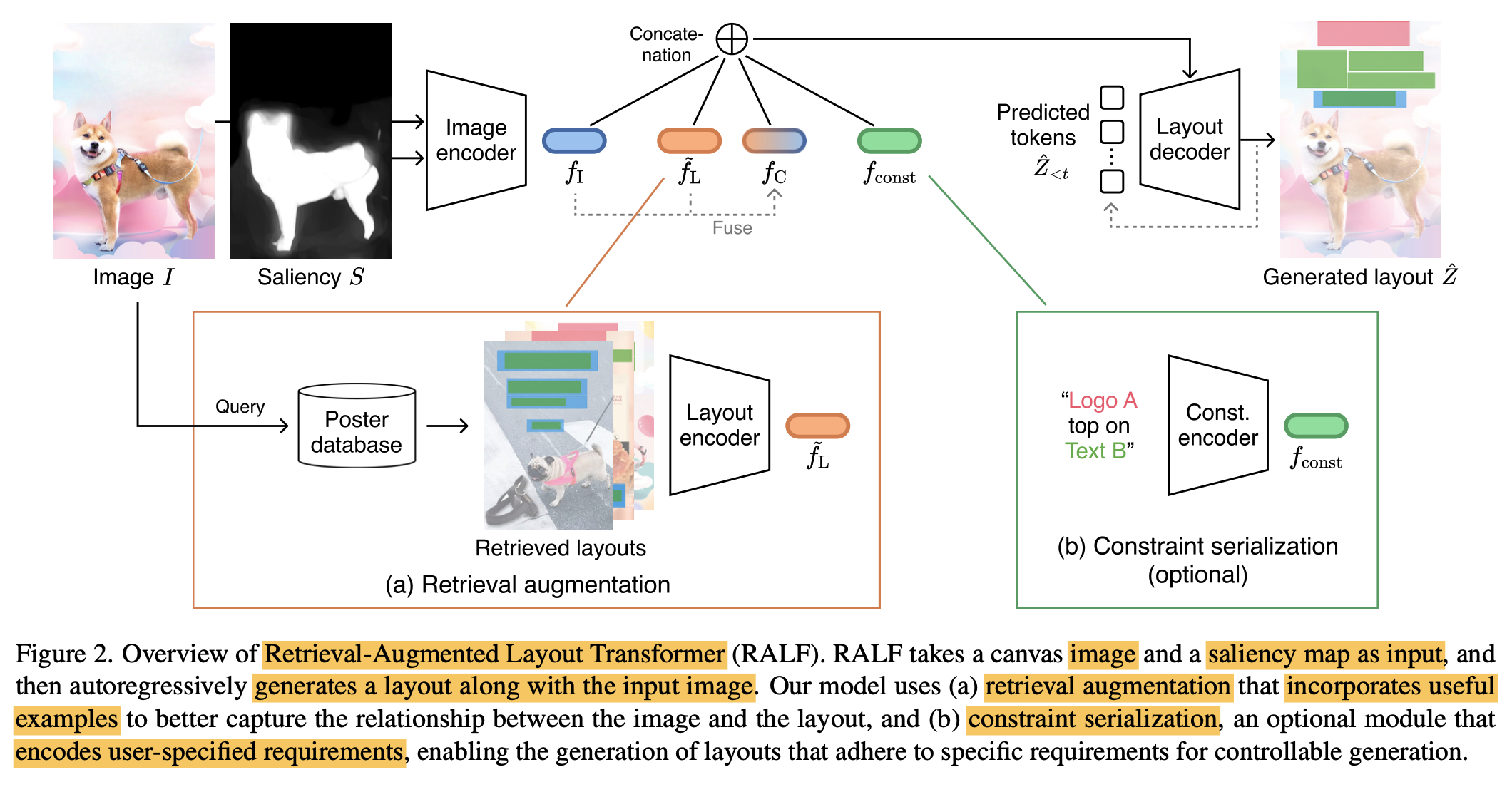
-
Image encoder
-
baseline : CGL-GAN
-
backbone : Res-50 + ViT

-
-
-
Retreival augmentation module
-
가정: 유사한 이미지에서 추출한 layout 정보는 layout을 생성할 때 useful할 것이다.
-
Input: $f_I$
-
output: top-k 유사한 retrieved image의 layout feature $f_R$
$\tilde{L}={\tilde{L}_1, …, \tilde{L}_K}, k \in \mathbb{N}$
-
Image embedding space : DreamSim $\to$ [12] 참고!
- object appearance, viewing angles, camera poses, overall layout을 고루 고려하여 embedding
- retrieval source는 학습에서 배제함
-
Layout embedding : pre-train F 를 self-supervised로 학습후 freeze하여 사용 $\to$ [25] 참고!
-
Feature augmentation


- query: image feature $f_I$
- key, value: retrieved layout feature $\tilde{f}_L$
-
-
Constraint encoder (optional)
-
user-constrain (instruction)을 embedding
ex. element types, coordinates, inter-element relationships
-
Transformer 기반 encoder로 $f_{const} \in \mathbb{R}^{n \times d}$를 생성
-
-
Layout decoder
- layout $\hat{Z}$를 iterative (autoregressive)하게 image feature와 함께 cross-attention 수행하여 도출
- attribute-wise하게 5T+1 step으로 생성
-
4. Experiments
- Dataset
- PKY: PosterLayout dataset
- 3 categories : logo, text, underlay
- Posters: 9,974개
- train : 7,735
- val : 1,000
- test: 1,000
- Unannotated canvases: 905개
- CGL: Constrained GAN Layout
- 4 categories: logo, text, underlay, embellishments
- Posters: 60,548개
- train: 48,544
- val: 6,002
- test: 6,002
- Unannotated canvases: 1,000개
- Posters: 60,548개
- 4 categories: logo, text, underlay, embellishments
- PKY: PosterLayout dataset
-
Evaluation Metrics
- Graphic metrics
- FID
- Underlay effectiveness (higher the better)
- Underlay 요소가 얼마나 overlay 요소를 포함하는가?
- Overlay effectiveness (lower the better)
- Underlay외 다른 요소들간의 intersection이 얼마나 되는가?
- Content metrics
- Occlusion (lower the better) : saliency value가 얼마나 layout 요소들과 겹치는가?
- Readability score (lower the better) : text 요소가 위치한 배경이 얼마나 non-flatness한가? (Gradient of image space를 계산)
- Graphic metrics
-
Annotated test set 결과
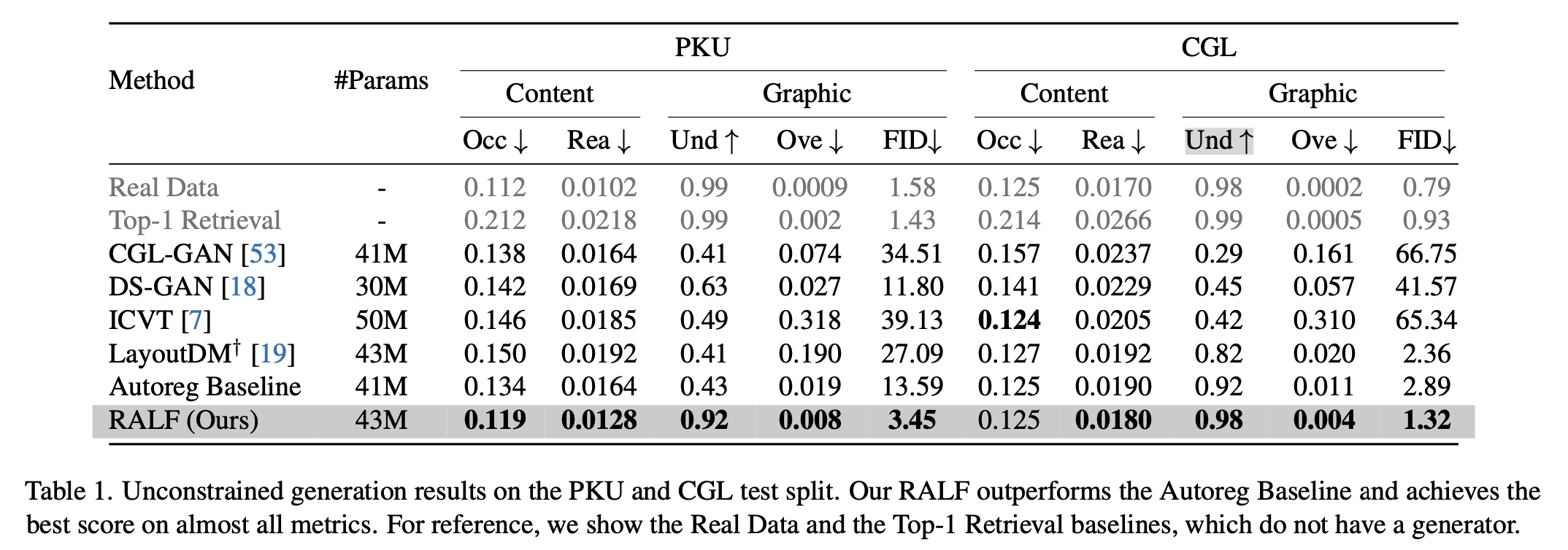
- Unannotated testset 결과

-
정성적 결과

-
Constrained Generation
-
정량적 결과

-
정성적 결과
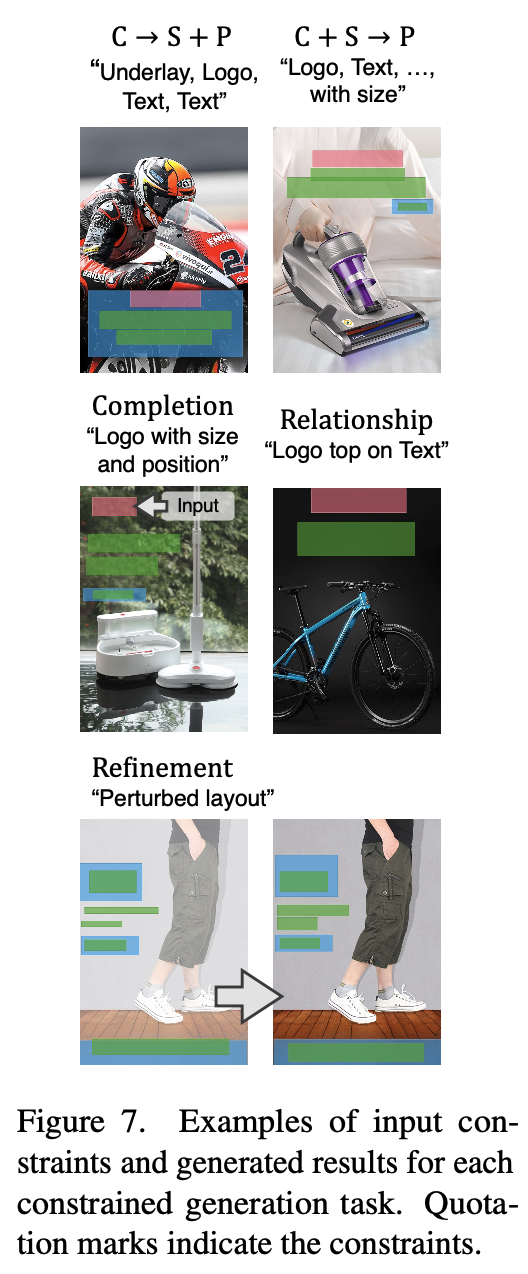
-
-
Ablation study
-
Training data 수에 따른 FID score
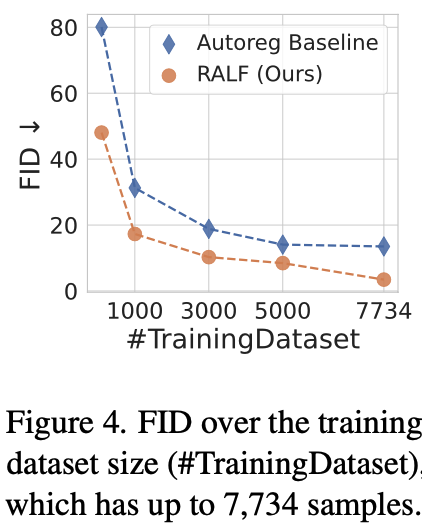
- RALF는 baseline대비 절반 이하 데이터만 가지고 더 좋은 성능을 냄
-
K값에 따른 결과
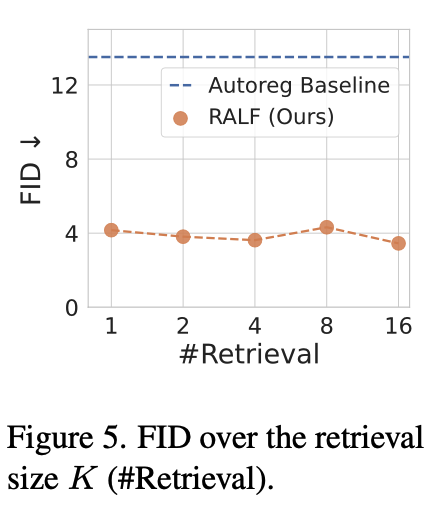
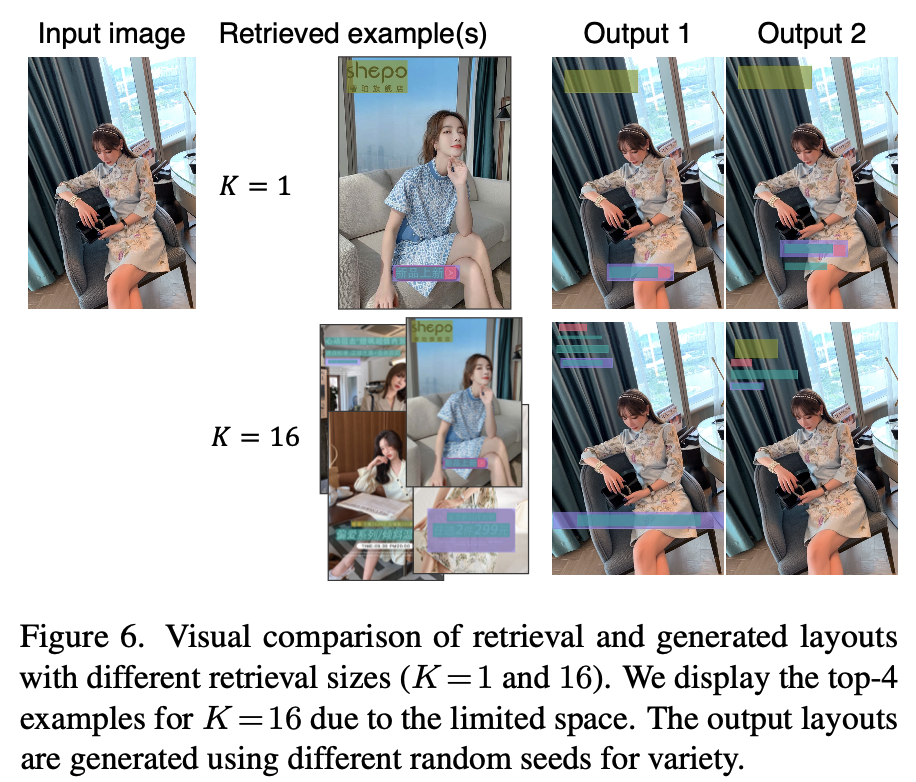
-
CGL-GAN말고 다른 generator (LayoutDM)에 Retrieval 적용된 결과
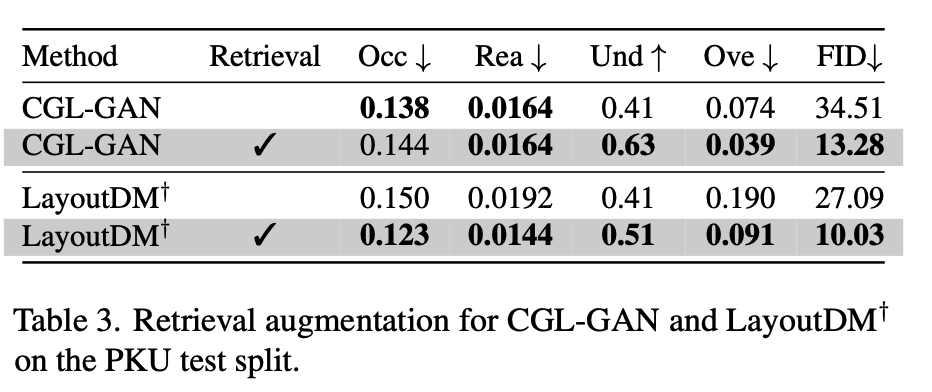
-
-
Out-of-domain 결과
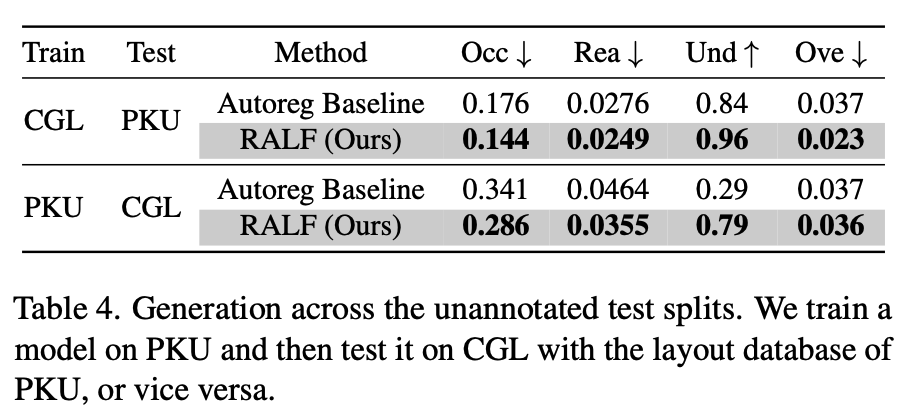
- 학습: PKU $\to$ 검증: CGL (Retrieval database = 검증)
- 학습: CGL $\to$ 검증: PKU
-
Retrieval Image encoder에 따른 결과
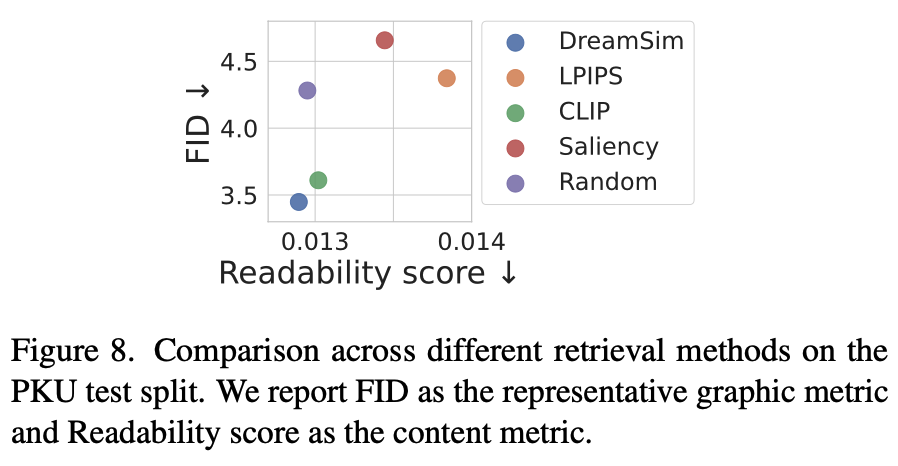
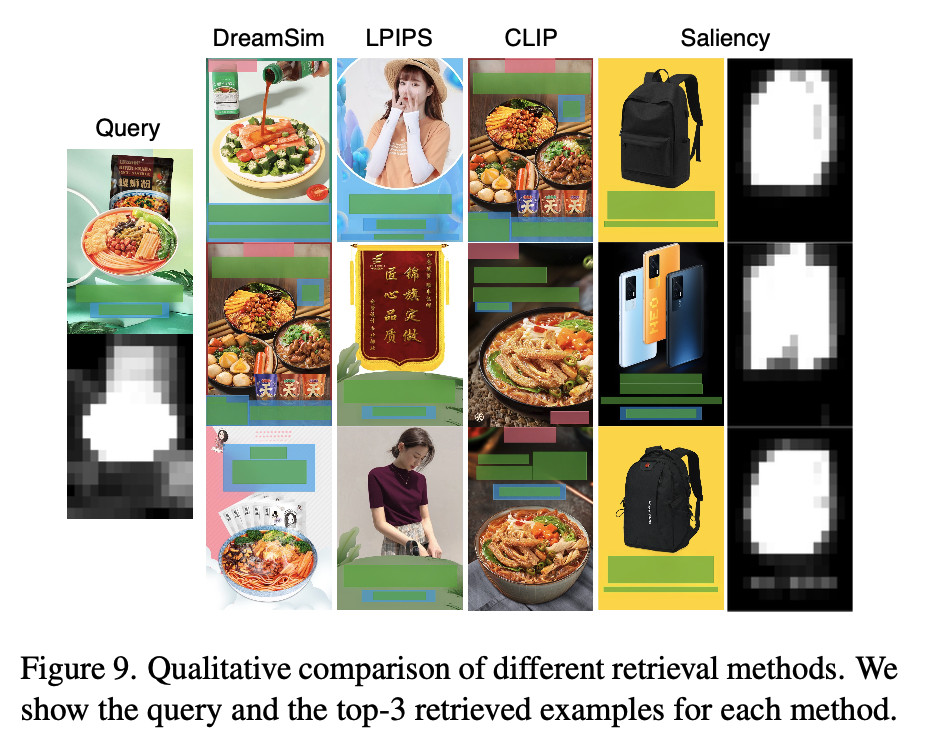
- DreamSim > CLIP > Random > LPIPS Saliency
- Random하게 database의 layout 정보만 활용하는 것도 성능 향상에 기여
- DreamSim > CLIP > Random > LPIPS Saliency
-
Feature augmentation에 따른 결과
